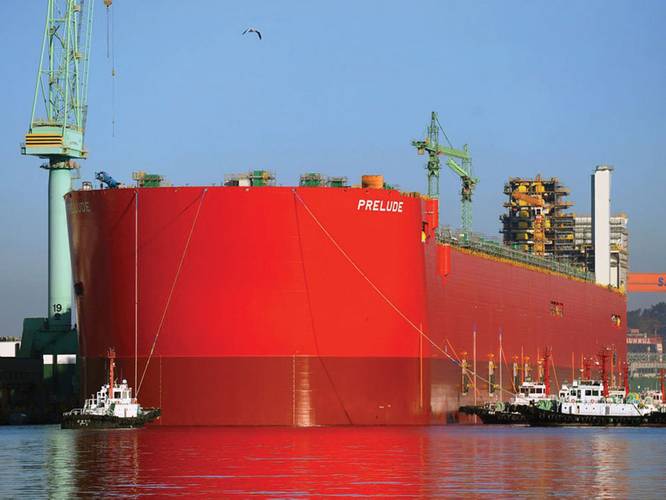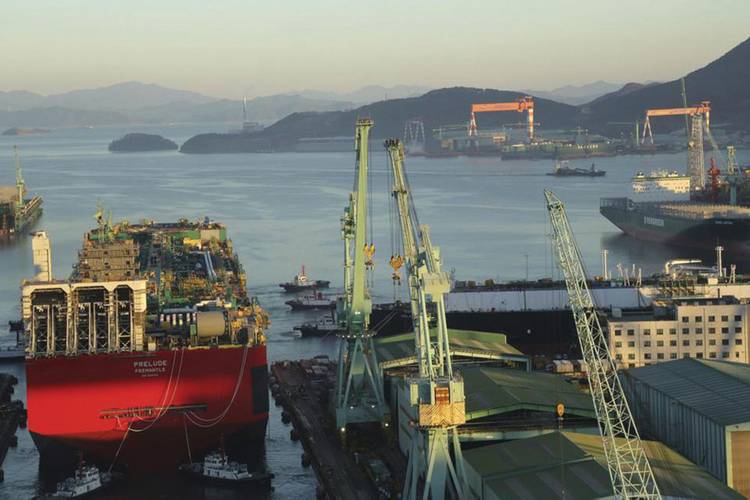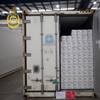Oil’s Downward Spiral Stalls LNG’s Ascent
As industry embraces gas, emissions regulations loom large and bunker logistics options develop, LNG’s fortunes nevertheless get a boost.
For every gleeful consumer at the pump, and stockpiling tanker anchored offshore, there’s a corresponding trail of businesses that are struggling to ride out the worst price drop in crude since the mid-1980s. As oil giants slash CapEx, Halliburton and other industry players layoff thousands and record numbers of oil rigs go offline, less obvious is the impact of the latest oil market blow out on the growth of liquefied natural gas (LNG). But, LNG’s fortunes are very much tied in ways both positive and negative to the ups and downs of pricing and regulation of its heavier cousin.
“At the moment, we’re not really seeing a big degree [of use] in LNG,” says Jim McCaul, founder and managing director of International Maritime Associates, consultants in the maritime, offshore oil and gas. McCaul, who has a PhD in economics from the University of Maryland, an MS in business administration from Pennsylvania State University and a BS in marine science from the State University of New York Maritime College, spoke with Maritime Reporter & Engineering News recently about how issues such as crude pricing, demand, emissions regulations and bunker pricing and infrastructure are influencing the business plan for LNG.
Hammer Time
The most evident impact has been in pricing. Crude oil prices have been dropping precipitately since mid- 2014, from $115/barrel in June to $70 by December to as low $48 and change last month – a roughly 57% drop in price. While some observers expect prices will stay at or under $50 a barrel throughout 2015, the most recent pricing at press time was bouncing in the $60 range, and a report released last month by JP Morgan insists the worst of the crash is over.
On the LNG side of the energy coin, gas prices are half of what they were a year ago. Natural gas hit a late November 2014 six-month high of about $4.50/MMBTU, before dropping to a 52-week low of $2.59 in early February. Frigid temperatures are helping to push prices upward, resting at $2.95/MMBTU at press time. The 52-week high, which is also the five-year high, is $6.16/MMBTU, driven by last year’s icy temperatures. Record demand and prices in 2014 accelerated record output, resulting in an oversupply, which in turn drove down pricing to the lowest levels in over 2 years, as seen in early February. The Henry Hub natural gas spot price was $2.75/MMBtu as of Feb. 17, down from a high of $5.54, representing slightly more than a 50% drop from a year ago.
“LNG prices have fallen quite a bit over the last few months. They have fallen in January on delivered price – probably at 50 or 40% – over the last six months,” notes McCaul.
Where Crude Goes, LNG Follows
No one knows when pricing will turn around, but in the meantime, McCaul points in particular to two factors depressing LNG pricing: an imbalance in supply and demand, and the fact that LNG prices are tied to the price of crude. “There is a formula in these big, long-term contracts that when the price of crude goes up or down – the contract price for LNG goes up or down based on a fixed number, and then it’s tied to the price of crude, the index of the price of crude on a long-term basis internationally, so the drop in LNG is always slightly less than what happened on the crude side.”
The formulas differ, according to McCaul. For example in India and Korea, LNG pricing is tied to the Japan Crude Cocktail, which takes the average price of seven different crudes and works it into an aggregate average price, which is used for indexing to come up with the LNG price. So LNG pricing – even in a 30-year contract – will still go up and down based on the price of crude at specified points in the contract.
This creates a fixed factor of LNG pricing not moving as fast as the price of crude, says McCaul. If crude falls by 50%, for example, LNG will probably fall by 30% –and lag a bit. The scenario is the same when the price of crude goes up. “What complicates all this is the export of LNG is not tied to that formula,” says McCaul. “It’s tied to the price of Henry Hub – plus some fixed amount for liquefaction and delivery. It’s totally different from the international way of doing this.’’
In addition to pricing, LNG as a fuel is also affected by regulatory pressures and the environment.
In the U.S., the first two variables are close to equal, says McCaul. “I don’t think anyone cares about the environment.” In Europe, he sees the reverse in terms of importance. “I think the environment might be important, regulations, then pricing. LNG is a little pricey there. They don’t have the benefit of this country – the tremendous amount of gas here. It’s coming out of everywhere. Gas is almost free in some cases.”
The one thing most people fail to realize when looking at the impact of crashing crude oil prices on LNG, is that the U.S. market is unique, in great part because it’s isolated, and more recently, because it has become the biggest producer of shale gas.
Emissions Rules Stoke Interest in Gas
The price of crude oil has more than halved in the last six months, taking the shine off the allure of going “green,” but there’s a more compelling, and pressing reason to think at least a little bit green. Emissions regulations slated to go into effect in 2016 are forcing the industry to consider using LNG as bunkers. Gas is a cleaner fuel than oil, and helpfully, it’s cheaper. A byproduct of switching over to gas is a cleaner environment.
In the U.S., LNG is seen as a way to eliminate “quite stringent” emission regulations, he says. “The difference between the U.S. and elsewhere,” he notes, “are tougher SOx and NOx rules, and the cheap supply of gas. It’s a good situation. So things are being driven a little differently here. Elsewhere., I am not sure what they will do.”
Using LNG as bunkers, however, will require significant investment. While there are already dual-fuel engines on the market, vessels that want to run on LNG need storage, and they need supply. “Unless you put gas into LNG form and have a pipeline going across borders, it’s hard to export gas. It’s not like oil, which you can just dump [as is] into a ship.”
In regard to the engines, big suppliers, including MAN Diesel of Germany, have built low-speed diesel designs that enable switching between diesel and bunker fuel and using methane from an LNG tank in the ship. “They got a bunch of orders for these types of engines – mostly in the U.S.,” says McCaul.
The real problem with fueling ships with gas is the need for really big storage tanks. “When it comes down to BTU per volume, you get more out of oil than gas, because you have to carry a bit more gas than volume in the ship, and it’s an awkward volume too,” says McCaul.
It’s complicated enough that McCaul says the solution calls for mostly newbuilds, designed to accommodate very large, “peculiar” tanks that occupy a lot of space. And options are limited. You can’t, for example, put the tanks under crew housing. In some cases, the tanks end up tacked on the back end, displacing containers, which cuts into revenues over time. “You have to ask yourself, ‘Would someone build a ship like that under normal circumstances if the emissions requirement was not there?’ I doubt it.”
Movement is already underway in the U.S. “There’s a whole pile of ships being built here under the Jones Act. Most cargo ships built recently were designed to use LNG as fuel, and they are all being built in the U.S., for example Puerto Rico and Matson in Hawaii, and all that is being driven mostly by the fact that gas is cheap here,” says McCaul.
n alternative response to emissions rules is the deployment of stack emissions scrubbers. For vessels that are always in and out of U.S. ports with access to cheap gas, an LNG-powered ship makes more sense. But higher gas prices in places like Japan, means scrubbers may be a better deal there, in McCaul’s view.
If You Build It, How Will You Fill it?
Running on empty only works in a song. Infrastructure for LNG bunkering barely exists. There’s plenty of gas, there just aren’t a lot of LNG refueling stations. It’s particularly difficult for vessels plying an international trade, to find LNG fueling depots.
The problem is more that the current LNG universe is small overall, and concentrated in a few areas, both in terms of sourcing and buyers. LNG is largely consumed in Japan, Korea and Asia – and to a lesser extent in Europe, says McCaul. There is very little demand in the U.S., South America or Africa. The product primarily comes out of the Middle East, places on the Mediterranean, and Yemen. “There’s relatively few places where [LNG] comes from and relatively few places where it is going,” observes McCaul, and even that may shrink. Japan has significantly increased its use of LNG since closing down its nuclear power plants, but those plants are expected to come back on line, lowering LNG worldwide demand.
Even in the U.S., points out McCaul, there’s no need for a huge number of LNG refueling terminals. A lot of LNG was supposed to come to the U.S., which six or seven years ago, had built maybe five or six terminals to receive imported LNG, with applications to build 40 more. But the discovery of gas here quickly flipped the focus to exporting gas, starting next year, to help fill growing demand in China and India.
Bunkering options will be created, says McCaul, noting that LNG-fueled ships are being built in the Gulf, as well as in Holland. He estimates that the U.S. could get by with less than 10 refueling facilities. But there’s little demand at the moment, he adds, “Because not enough people want it yet.” On the plus side, LNG bunker fuel costs, meanwhile, have declined much like gasoline prices in this country. “There’s one airline talking about how much money they expect to make this year based on lower fuel costs – ships are the same.”
One place where LNG is hot right now is the Gulf of Mexico, for supplying offshore support vessels. “There’s a lot of interest to having those things powered by LNG, and it’s got nothing to do with the environment – it’s just plain cheap.”
LNG Hurt Locker
In the meantime, oversupply, underpricing and slashed budgets are exacting a toll. When crashing oil prices force a major oil company like Shell to defer or cancel 40 projects and cut back on exploration, LNG can’t escape the blowback. For instance, LNG export projects are being canceled, delayed or put on hold, including a $32 billion LNG plant slated for Canada’s Pacific coast, and in all likelihood, at least some of the 15 pending applications for LNG export terminals in the U.S. In another example, McCaul points to a project to build a barge with a liquefaction plant on it to be placed in Columbia, S.A., by Pacific Rubiales. A month away from completion and the company decided it didn’t want the vessel any more. “They put it on hold two weeks ago because the economics of the mix is just not working; in this new situation they probably will not break even,” says McCaul, “so the question at this point is what might they do with it? I don’t think they know either.”
The drop in crude pricing is significantly impacting LNG pricing worldwide, but particularly in the U.S., where producers seeking returns of up to $12 per mmbtu were facing $8.40 per mmbtu once crude fell to $60, and even less when it hit the lower depths of $50. Asian projects too are undermined by LNG prices, which have dropped under $10 MMBTU there.
A report from Cowen & Co. estimates that spending on exploration and production has dropped by more than $116 billion during oil’s freefall. Indeed, exploration and drilling has been very hard hit. Projects worth funding at $100 a barrel are being shuttered and put on hold. In the last two weeks of February alone, 177 U.S. oil rigs were idled, according to Baker Hughes, bringing the total rig count down 25% since October, its lowest level since August 2011.
“The drilling business is horrible right now – no one wants to drill for low-cost oil,” says McCaul. “There’s a lot of drilling on land that they aren’t completing, where they have a hole dug and are walking away from it. Why take it out at $50/barrel when a year from now it could be $100/barrel? They’ll just leave it in the ground [until then].” Drilling for shale faces a similar dilemma.
Driving LNG Futures
The current situation of weak demand, oversupply and record low pricing meeting up with limited bunkering options and stalled drilling and building projects is going to bring change to the LNG market, starting with project planning and structures.
LNG projects have typically been tailor-made for a specific situation, and would encompass contracts to build the LNG import terminal, build the LNG liquefaction facility wherever the gas is and to build all the ships needed to carry the stuff. Everyone involved would have to commit to a 30-year proposition. The trend is toward building facilities that are not tied to a long-term contract, nor a specific use.
The use of gas as a fuel for ships is all part of a much bigger picture. Cheap gas, it turns out, is one of the major reasons for the economic turnaround in the U.S., according to McCaul. “It’s just a phenomenal thing to have happen.” It’s driving the demand for new factories and new industry. “A lot of petrochemical businesses that had been outside the U.S. – or were here and moved out – are now coming back. German companies in particular find this a very attractive place to put up a plant.” The U.S. has also become extremely competitive for factories where gas is part of the production process. And then, there is the worldwide movement toward gas-powered power plants.
As to when the industry might see a price recovery in oil and gas, and to what levels, well, that’s anybody’s guess. “Everyone pontificates but no one knows what and when the price of oil will be. Eventually it will have to go back up.
“In order to go find and develop and deliver crude oil, you have to have some price that gives you return on investment – otherwise you won’t do it – $55 is at that level,” explains McCaul. “It will constrict the supply and drive the price back up again – how much, and when, is another question, but it’s probably not too far off in the future.”
While some point to a future market of $75, McCaul says he’s been using a price range of $60 to $80 for his work. “It could be next week or a year from now before we get to that amount.” When exactly, is the multi-billion dollar question. McCaul says to watch for “imbalances.” As the surplus falls off and demand grows, “as soon as a slight imbalance occurs, we’ll see pricing changes. It’s just supply and demand. It [pricing] has nothing to do with OPEC or the impact of regulations. Things just got out of whack.”
Longer term, the future is bright for gas, according to the International Energy Agency. Its “World Energy Outlook for 2014’’ report projects that natural gas will continue to increase its share of the global energy mix, growing at 2.4% per year until 2018, eventually growing to represent a quarter of the global energy mix – oil, gas, coal and low-carbon sources – by 2040. Oil and gas will continue to make up about half of global supply in 25 years’ time.
With conventional supplies often taking years to bring online, and unconventional supplies requiring potentially lengthy changes in infrastructure or regulation, the industry must think about how it must develop supply over the years to come.
(As published in the June 2015 edition of Maritime Reporter & Engineering News - http://magazines.marinelink.com/Magazines/MaritimeReporter)
















